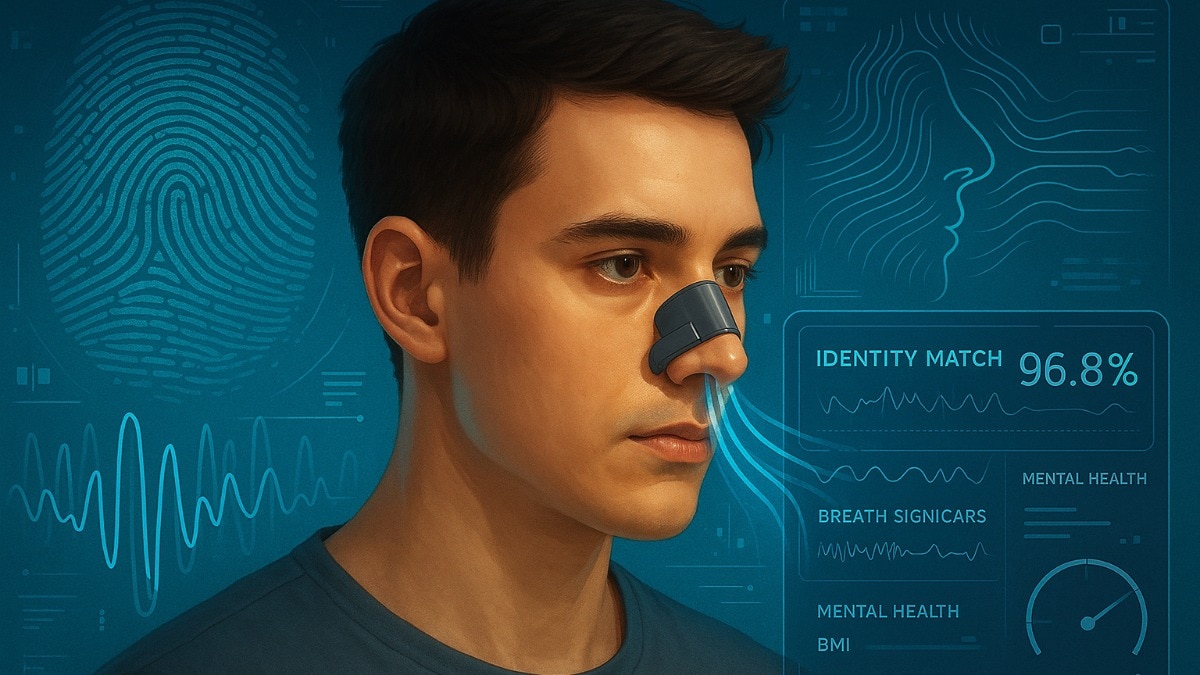What if your breath could identify you better than a fingerprint? Scientists have discovered that the way you breathe through your nose forms a unique, stable “nasal respiratory signature,” a new kind of biometric that not only reveals your identity with striking accuracy but could also offer a window into your mental and physical health.
Researchers at Israel’s Weizmann Institute of Science have developed a wearable device that can identify individuals with up to 96.8% accuracy by analysing how they breathe through their nose. The study, published in Current Biology, introduces a groundbreaking biometric tool that goes beyond identity, tapping into traits like body weight, anxiety levels, and even early signs of neurological disorders.
The 22-gram device, called the “Nasal Holter,” tracks airflow from both nostrils over a 24-hour period. It was tested on 100 participants during their normal daily routines. Scientists used AI algorithms to evaluate 24 different metrics—including inhale volume, nostril cycles, and breath rate—and were able to accurately identify individuals even years later.
“Breathing may seem simple, but it’s shaped by a complex brain network unique to each person,” researchers noted.
The precision of these results rivals voice recognition, making breathing a powerful new frontier in biometric identification.
But the breath tells more than just who you are.
Researchers found that unique respiratory patterns could predict body mass index (BMI), sleep states, and even mental health markers.
For example, people with anxiety tended to take shorter inhales during sleep, while those experiencing depression showed altered airflow during the day. The breathing signature also detected characteristics linked to autism and accurately mapped the natural nasal cycle.
“Long-term breathing patterns reveal how the brain controls respiration, offering insights beyond basic lung function,” said lead author Timna Soroka. “Because breathing reflects brain activity, changes could signal mental health issues or neurological disorders before symptoms appear.”
However, the technology also brings privacy risks. Although the current version of the Nasal Holter requires direct contact, future advancements could allow for remote breath analysis, raising concerns over involuntary biometric surveillance.
The study did have limitations. It focused primarily on healthy young adults and relied partly on self-reported data. Some participants also reported discomfort while wearing the device. Still, researchers believe nasal airflow patterns are as distinct and revealing as fingerprints, only more dynamic.







